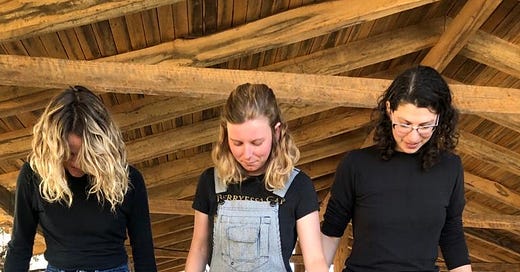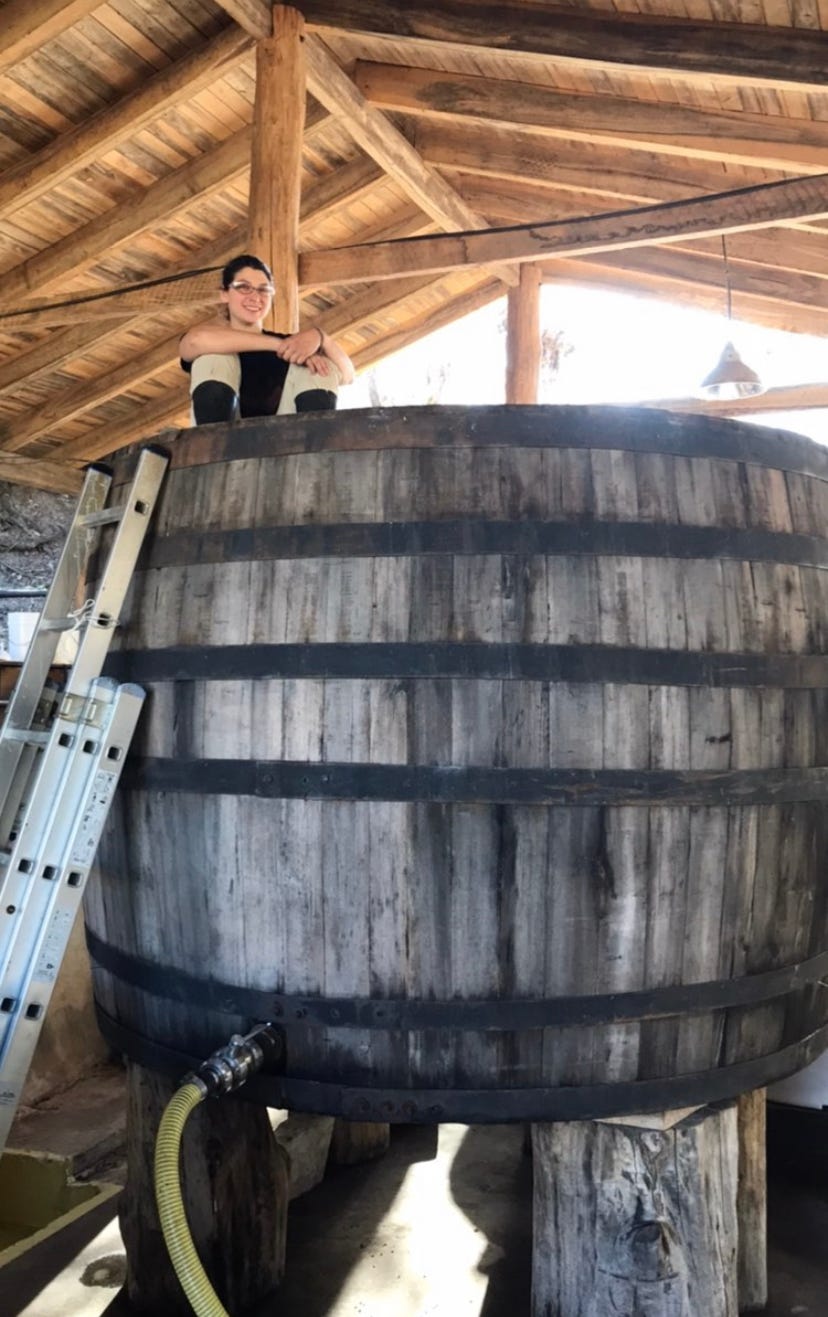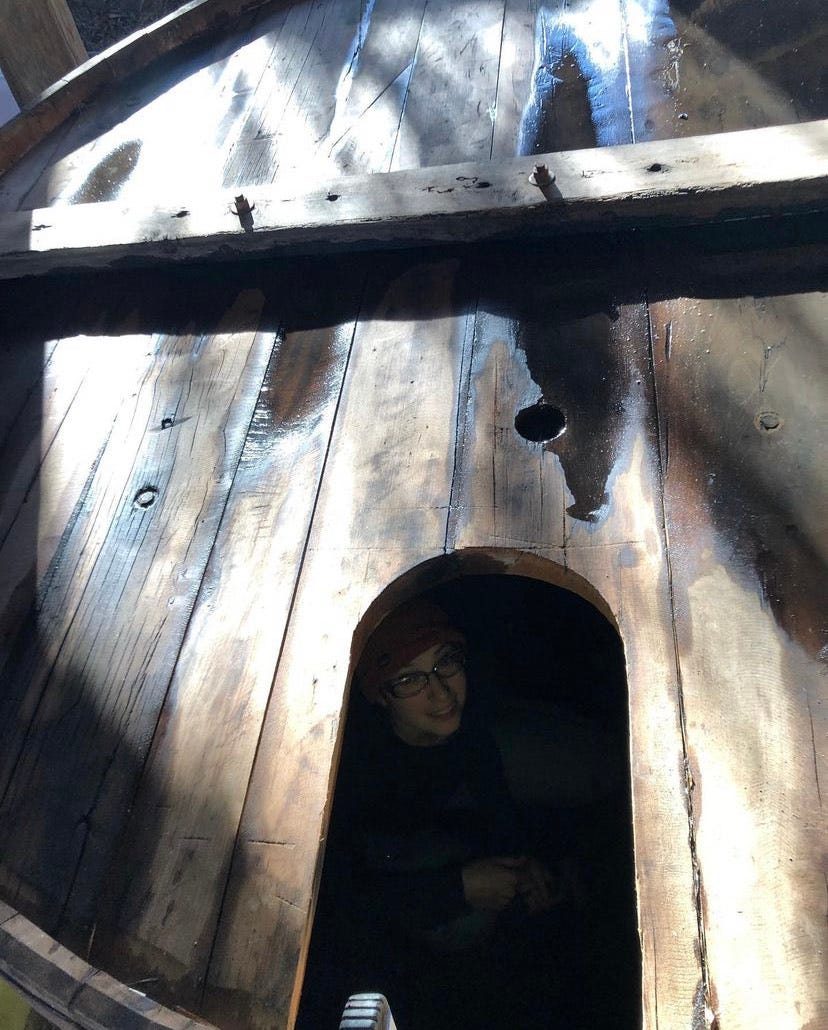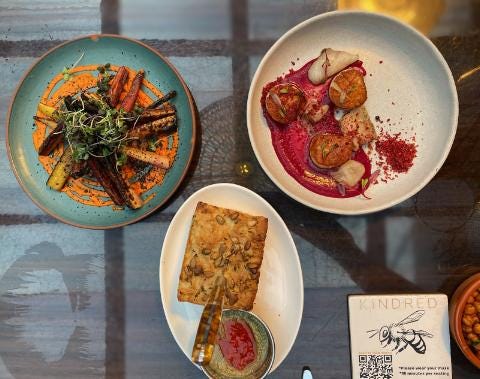Ancient ruali foudre, carbonic maceration, and a gnocchi to die for in the East Village
with some attention paid to the wines of Alessandra Divella
As the weather in New York warms, temperatures in the Maule Valley are going the other way. The nights are getting chilly; sweatshirts are back in rotation. The harvest is in its final weeks. Sarah and the crew are pressing much of the final tons of grapes through a zaranda. A zaranda is large bamboo mat that's placed atop a bin that acts as a destemmer. Using hands, or feet, the grapes are gently pressed against the bamboo as the juice collects blow, leaving the skins, seeds, and stems above. It's a gentle and efficient manual method of isolating the juice, and looks like a lot of fun. The only trouble is that thirsty, jealous wasps will sometimes, in their excitement, give you little stings.
I haven't been able to discover the history of the zaranda, nor whether or not it is used outside of Chile. If anyone has any more information on this technique, please let me know!
Sarah also assisted with the carbonic maceration of the pais. Carbonic maceration is a technique in which the majority of the juice begins to ferment inside the uncrushed grapes. In this instance, whole clusters of grapes were thrown into a vat of already fermenting juice. The CO2 from the fermentation activates the juice inside the grapes, where it ferments without picking up any of the tannins from the outside of the skins, resulting in a lighter, more playful style of red wine. Beaujolais Nouveau is the most famous example of this style, but more and more winemakers, especially “natural winemakers” are using it to produce more easy drinking, “glou-glou” wines. Carbonic maceration wines are generally served younger, like rose, so they can be sold immediately, rather than set aside for months, or even years, providing some much needed cash-flow for the winemaker's feast or famine economic cycle. Sarah tasted some of the grapes and was tickled by how tangy and fizzy they were.
Sarah also prepped and cleaned out the two hundred year old foudre, large wooden vats holding more than a thousand liters of wine. The foudre were made from mature trees that were likely well over a hundred years old, meaning Sarah was cleaning and soaking wood grain older than the United States itself. They are made from native Chilean rauli, a type of beech tree that once defined much of the Chilean forests. It has been over-harvested then replaced with fast growing pine and eucalyptus used for primarily for paper production. Wine can never escape its colonial history. Pais is known by many names, including “Mission,” because it was planted by Catholic missionaries who played an outsized role in the genocide of indigenous peoples. Even in old Europe, many of the wine regions we recognize today were established by the Romans as they conquered the continent. Other, more equitable arrangements are possible, however. As Chile's reputation as a wine region grows, interest in rauli barrels has increased as well. The Chilean wine industry has the opportunity to align itself with indigenous peoples trying to re-establish their native forests, and we hope they do so.
Meanwhile, back in NYC, I had the most excellent meal at Kindred. Kindred is an Adriatic regional restaurant with a seasonally driven menu with a special focus on handmade pasta. It's the sister restaurant of Ruffian, our favorite wine bar (now that ours is gone). Alexis Percival, the award-winning wine director, and founder of a well-known women's only wine tasting group, has created a beautiful beverage program that not only features an impeccable and eclectic wine list but also some of the best cocktails in the city. In addition to dinner, I was there to take a deep dive into the Champagne-style wines from Alessandra Divella, the twenty-nine year old darling of Italy's Franciacorta region in Lombardy.
Franciacorta is a curious wine region. It's an intentional attempt to replicate the quality of style of Champagne on Italian soil, transposing French grapes like Chardonnay and Pinot Noir and replicating all their traditional techniques. It only began fifty years ago and was only recognized officially in 1995. Typically I give a little side-eye to this fetishization of the noble grapes, but Divella's wines are extraordinary. Her entry-level wines have a ferocity and depth that set your shoulders back, and her higher tier wines, carefully blended and spending forty-two months on the lees, are rich, lush, and layered. These are bold, sensual, hard-to-find wines that should always be ordered on sight. They were a perfect accompaniment to our hay-smoked rainbow carrots and harissa (a must order), rosemary and pumpkin seed focaccia, scallops with lardo and beet puree, lobster quadratini and a gnocchi bolognese that has ruined all other gnocchi for the foreseeable future. The level of cookery at Kindred is among the finest in the city and their plating is inspired, but the prices are very approachable. It has my highest recommendation.
Have a great weekend, friends.
William








